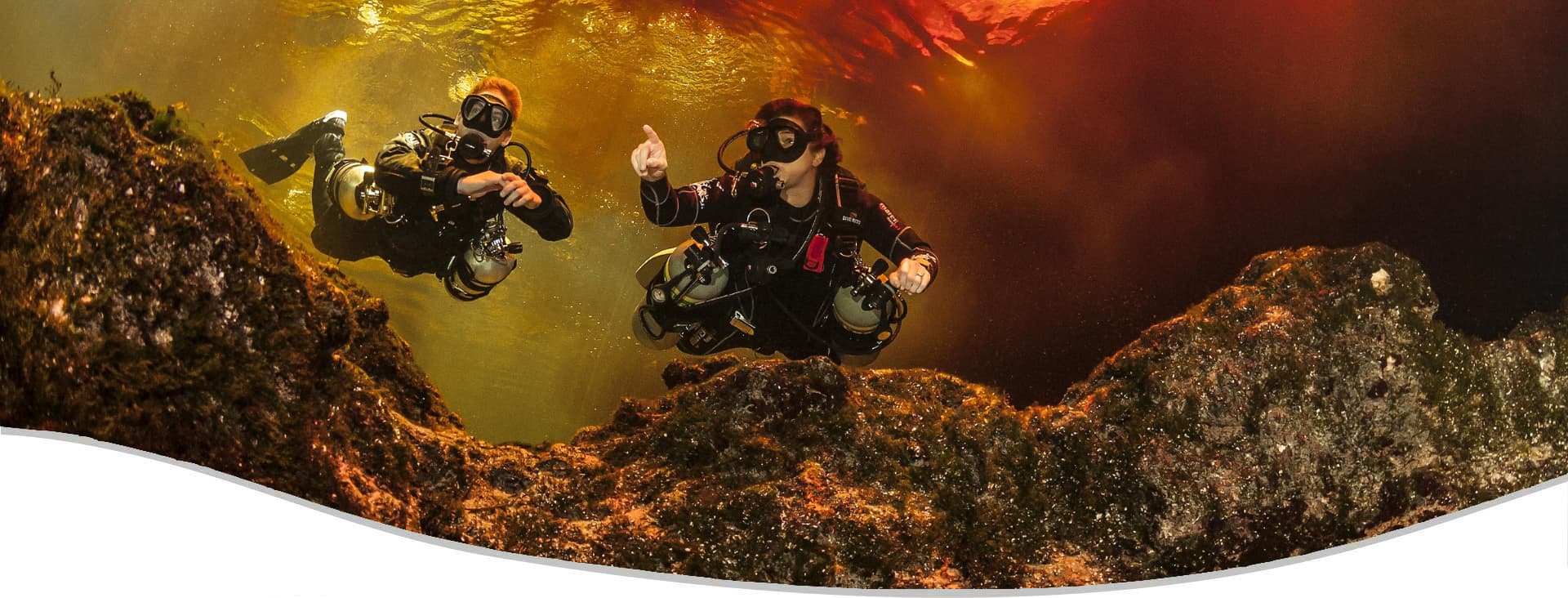Minimum Age: 18
Certification Prerequisites:
- PADI Tec 40 Diver
- PADI Rescue Diver
- Have a minimum of 50 dives logged
- Have a minimum of 10 dives logged deeper than 30 metres / 100 feet.
- Have a medical form signed by your physician
Price: Contact us
The PADI Tec 45 course extends your depth limit to 45 metres/150 feet. You will learn to plan and execute single and repetitive decompression dives using a single decompression cylinder with up to 100 percent oxygen. You will use double cylinders, which can be either back mount or sidemount diving configuration. Tec 45 is a prerequisite to Tec 50.
Your Tec 45 training consists of seven knowledge development sections, four practical application sessions and four open water dives. Building on what you learned in the Tec 40 course, you will focus on additional techniques, procedures, and emergency skills. You will learn more advanced decompression, gas planning, decompression models, and fine-tune your thinking like a technical diver. This is a course where you rise to the challenge and commit to becoming a technical diver.

